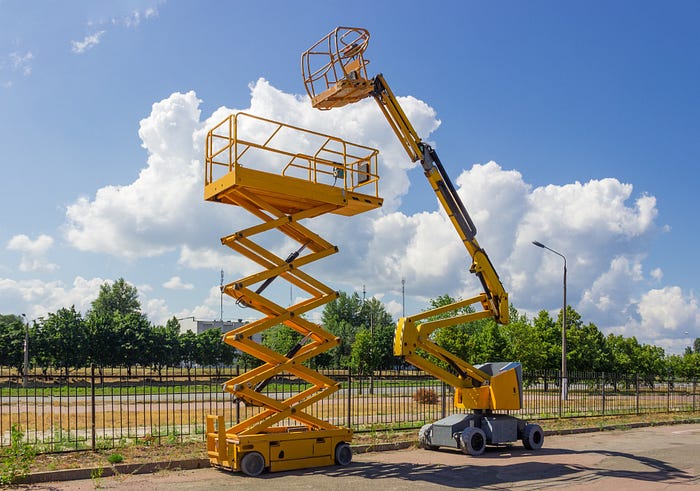Boom lifts are aerial work platforms (AWPs) that are used to elevate workers and equipment to heights. They are commonly used in construction, maintenance, and utilities. Boom lifts are versatile machines that can be used for a variety of tasks, such as:
• Installing and repairing electrical lines
• Painting and cleaning buildings
• Pruning trees
• Inspecting bridges and other structures
• Repairing and maintaining roofs
While boom lifts are essential tools for many industries, they can also be dangerous if not operated properly. Boom lift operators must be properly trained in order to safely operate these machines and avoid accidents.
What is a boom lift?
A boom lift is a type of AWP that consists of a platform attached to a telescoping or articulating boom. The boom can be extended and elevated to reach heights of up to 185 feet. Boom lifts are also equipped with outriggers to stabilize the machine while it is in use.
Types of boom lifts
There are two main types of boom lifts: telescopic boom lifts and articulating boom lifts.
• Telescopic boom lifts have a single boom that can be extended and elevated. Telescopic boom lifts are known for their long reach and are often used for tasks such as installing electrical lines and painting buildings.
• Articulating boom lifts have several booms that can be articulated (bent) at different angles. This allows articulating boom lifts to reach over and around obstacles. Articulating boom lifts are often used for tasks such as pruning trees and inspecting bridges.
Boom lift safety hazards
Boom lift operation presents a number of safety hazards, including:
• Overturning: Boom lifts can overturn if they are not properly stabilized or if they are overloaded.
• Falls: Workers can fall from the boom lift platform if they are not properly secured or if they are not wearing a personal fall arrest system (PFAS).
• Electrocution: Boom lifts can come into contact with overhead power lines, resulting in electrocution.
• Collision: Boom lifts can collide with other vehicles, objects, or workers.
Boom lift training requirements
The Occupational Safety and Health Administration (OSHA) requires that all boom lift operators be properly trained. OSHA training must cover the following topics:
• Types of boom lifts
• Boom lift hazards
• Boom lift safe operating procedures
• Boom lift inspection and maintenance
Boom lift training course topics
Typical boom lift training courses cover the following topics:
• Introduction to boom lifts
• Types of boom lifts
• Boom lift hazards
• Safe boom lift operating procedures
• Boom lift inspection and maintenance
• Hands-on training
How to find a boom lift training course
There are many organizations that offer boom lift training courses. To find a course near you, you can search online or contact your local equipment rental company.
Tips for safe boom lift operation
Here are some tips for safe boom lift operation:
• Always inspect the boom lift before using it. Make sure that the outriggers are extended and that the boom is in good condition.
• Never overload the boom lift.
• Always wear a PFAS when working in a boom lift.
• Be aware of your surroundings and avoid overhead power lines and other obstacles.
• Do not operate the boom lift in windy conditions.
Conclusion
Boom lift training is essential for safe boom lift operation. By taking a boom lift training course, you can learn the skills and knowledge you need to operate these machines safely and avoid accidents.
Additional information
In addition to the topics covered in most boom lift training courses, there are a few other things that boom lift operators should be aware of:
• Boom lift capacity: Boom lifts have a maximum capacity, which is the total weight that the machine can safely lift. Operators must be aware of the boom lift’s capacity and avoid overloading it.
• Boom lift stability: Boom lifts are most stable when they are on level ground. Operators should avoid operating boom lifts on slopes or on uneven surfaces.
• Boom lift maintenance: Boom lifts must be regularly inspected and maintained to ensure safe operation. Operators should follow the manufacturer’s recommendations for inspection and maintenance.
By following these safety tips and being aware of the hazards associated with boom lift operation, operators can help to prevent accidents and injuries.


